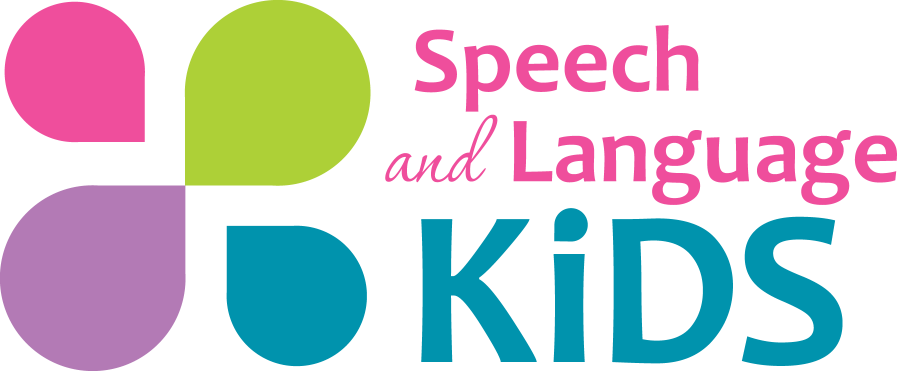Speech Therapy Tips for Resistant Clients
What do you do when a student shuts down and won’t participate in your therapy session? Kelly Hungaski from www.Speech2u.com joined us on The Speechie Show to share her favorite tips and toys for keeping kids engaged and excited to work during therapy sessions. #speechieshow
Below are the links to the products that were talked about in the Speechie show:
- Speech 2 U Website: www.speech2u.com
- Speech 2 U Teachers Pay Teachers Store: https://www.teacherspayteachers.com/Store/Speech2u
- Favorite Resource: Popper toys like this Unicorn one –> https://www.amazon.com/Hog-Wild-Unicorn-Popper-Sunshine/dp/B00T1EWOE6/ref=sr_1_2?ie=UTF8&qid=1492522753&sr=8-2&keywords=popper+toys
If you’d rather listen to the audio version of the Speechie Show, click here:
Or if you prefer to read the transcript, see below:
Welcome to the Speechie Show! Being a speech language pathologist often means having too much work and not enough planning time. To beat the overwhelm, we’re bringing you the tricks and tools that will make your job a little bit easier.
Carrie: Hey everybody and welcome to the Speechie Show. I am your host Carrie Clark from speechandlanguagekids.com and I am here today with Kelly from speech2u.com. How are you today Kelly?
Kelly: I am great, thank you.
Carrie: Thank you so much for being on the show today. We are talking today about what to do when your students shut down and don’t want to participate in your session. So, Kelly is going to be sharing some awesome tips with us today about how to get some engagement. How to get those students a little more focused and excited about doing what you want to do. So if you are new to this show, this is the Speechie Show. I do this once a week every Monday afternoon, more or less. And what I do is I interview a speech language pathologist and we talk about one topic. We share 5 tips and then we do some fun giveaways and talk about our favorite resources. So if you are watching with us today live on Facebook, welcome. Hang out with us for a while and you’ll have a chance to win our giveaways today. I don’t know what that chirping is, so sorry about that. So, here’s my question to you. If you are watching with us live today, do you feel confident about what to do when a student refuses? So, you’re doing therapy and the student is just not having it. Do you feel like ok I got this, I’ve got some things in my bag, I’ve got a bag of tricks? Or do you kind of freak out. Let us know in the comments how you feel when your students don’t participate. And while you’re doing that, Kelly why don’t you go ahead and introduce yourself and your business for us.
Kelly: Sure, so I have been a speech language pathologist since 1997. So, I usually have to pull up the age calculator since it’s been so long…hahaha…and I forgot to do it before I was on here so you can do the math for that. I also have a blog that’s called speech2u.com and I also create some resources for speech language pathologists on Teachers Pay Teachers.
Carrie: Fabulous, fabulous. And what ages are you working with right now.
Kelly: I am working with ages 2-17, so kind of all different ages.
Carrie: Perfect, alright. So, we’re going to be sharing tips with you today about how to get engagement across ages, not just specific to preschool or a certain age group. Ok so we’re going to go ahead and get started. We are going to share 5 tips with you today. If you have any questions, you can type those in and we’ll take those as we go. Also, don’t forget to share this on your Facebook page so other people can find us as well. Ok so the first tip we are going to talk about today is finding special interests and following the student’s interests during your session. Kelly tell us how that looks for you.
Kelly: So for me I’m going to think that our kids, and a lot of the kids that I work with are on the Autism spectrum and they have kind of very unique interests from maybe being interested in fire extinguishers, sprinklers, to Star Wars, to Minecraft. And being able to have a basic terminology for that can be kind of huge. Like Minecraft has been really big with my adolescent boys lately and so I have an 8-year-old, so I have a little extra knowledge with that. But you know being able to throw out, oh is that a creeper or is that Hero Brine. And I don’t completely know all of it but I know enough to get them engaged and they can explain and then we can start that conversation.
Carrie: Perfect, yeah. One of the things I really like to do for that is I will open up a PowerPoint presentation on my computer, like just a blank one, and I’ll ask them what topic they want to talk about and it’s usually one of their preferred topics. And we’ll type in the topic and then we’ll go over to Google image search, with SafeSearch on, and type in the topic and then pictures will come up and then you can kind of ask, oh what’s this. And if you can’t understand them you can click on it and it will usually tell you what it is. I did that with Ninjago because I knew nothing about Ninjago and had to figure that one out. So yeah, I love that. I think that’s really fun. Alright so, first tip, following special interest. The next tip is to make adjustments instead of corrections. Kelly, tell us how that looks.
Kelly: So this is really the students that really maybe don’t accept feedback very well or are very sensitive to it. So, I think a lot of times about my students who have articulation issues and instead of saying like that didn’t sound right or not that’s not correct, I really should be saying like oh let’s try that again but this time let’s move your tongue here. Or let’s try that again and this time I want you to bite on your tongue and I want to blow for the like the TH sound. And a lot of times that, because they’re not hearing it wasn’t wrong, you can kind of keep them kind of engaged. It’s like oh yep, let’s try this again but let’s do it in kind of a slightly different way.
Carrie: Yeah, I love that. I feel like a lot of our kids shut down as soon as they hear the, nope wasn’t right. For sure. Alright if you guys have any questions, go ahead and type those in as we go along. Or any tough cases, we can help you with those as well. Alright so the next one we’re going to talk about is errorless learning and how that can play into your sessions. How do you do that Kelly?
Kelly: And so this depends on I think on the age of the child. I think that a lot of the times you can give a lot of prompts to them…click here to read the full transcript.

About the Author: Carrie Clark, MA CCC-SLP
Hi, I’m Carrie! I’m a speech-language pathologist from Columbia, Missouri, USA. I’ve worked with children and teenagers of all ages in schools, preschools, and even my own private practice. I love digging through the research on speech and language topics and breaking it down into step-by-step plans for my followers. I graduated from Truman State University in Kirksville, MO with a masters degree in Communication Disorders.
Connect with Me:




This was great. I’ve done all of these things, but it’s good to hear it from others.
Wonderful!
Thank you both! Very helpful tips and ideas:-)
Excellent!